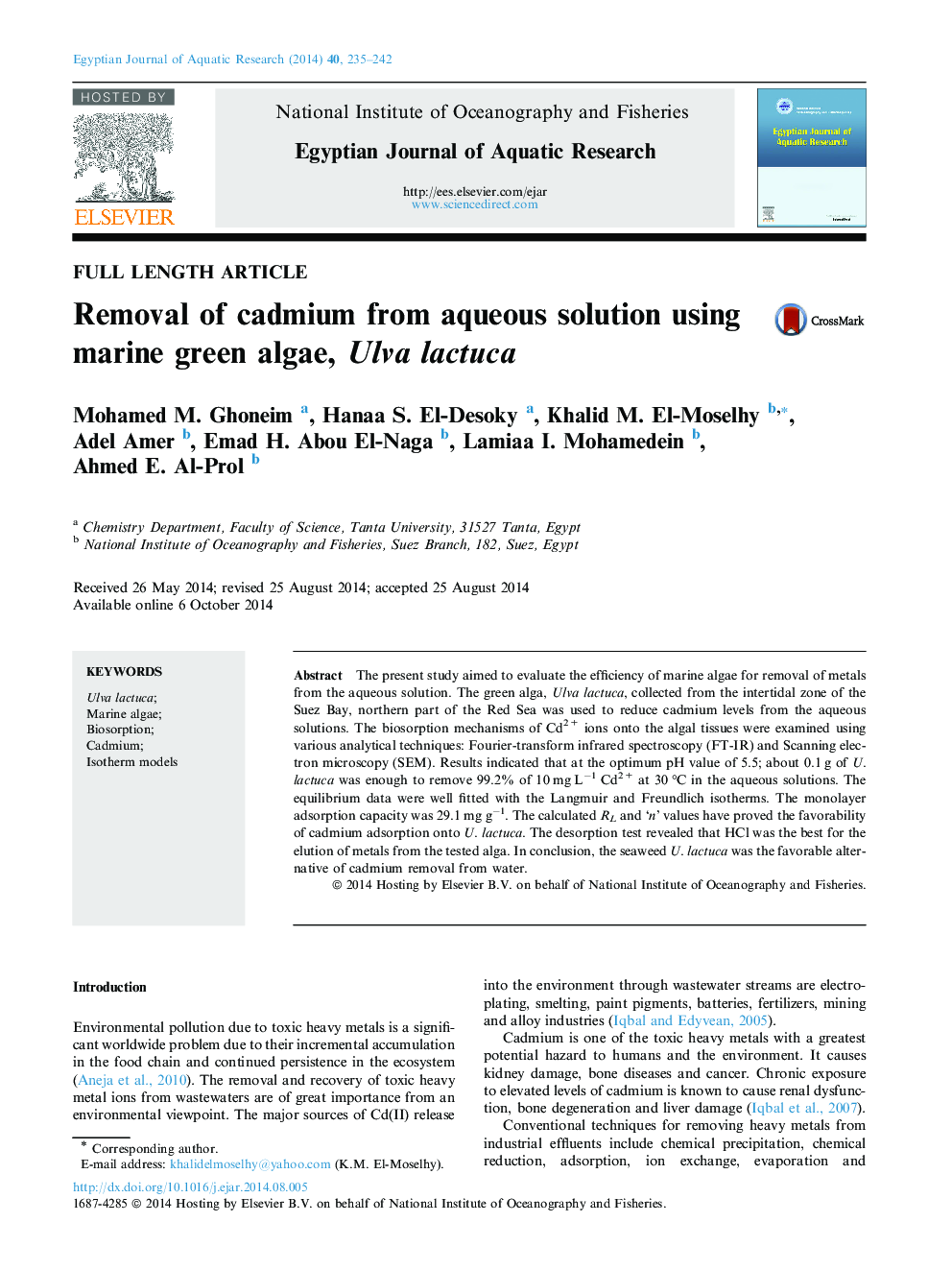| Article ID | Journal | Published Year | Pages | File Type |
|---|---|---|---|---|
| 4493156 | The Egyptian Journal of Aquatic Research | 2014 | 8 Pages |
The present study aimed to evaluate the efficiency of marine algae for removal of metals from the aqueous solution. The green alga, Ulva lactuca, collected from the intertidal zone of the Suez Bay, northern part of the Red Sea was used to reduce cadmium levels from the aqueous solutions. The biosorption mechanisms of Cd2+ ions onto the algal tissues were examined using various analytical techniques: Fourier-transform infrared spectroscopy (FT-IR) and Scanning electron microscopy (SEM). Results indicated that at the optimum pH value of 5.5; about 0.1 g of U. lactuca was enough to remove 99.2% of 10 mg L−1 Cd2+ at 30 °C in the aqueous solutions. The equilibrium data were well fitted with the Langmuir and Freundlich isotherms. The monolayer adsorption capacity was 29.1 mg g−1. The calculated RL and ‘n’ values have proved the favorability of cadmium adsorption onto U. lactuca. The desorption test revealed that HCl was the best for the elution of metals from the tested alga. In conclusion, the seaweed U. lactuca was the favorable alternative of cadmium removal from water.
